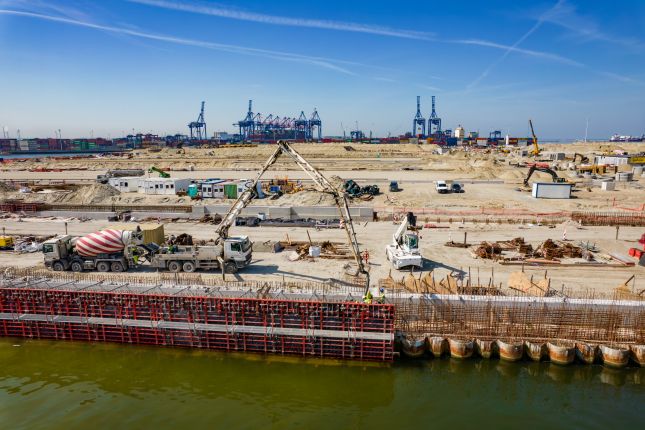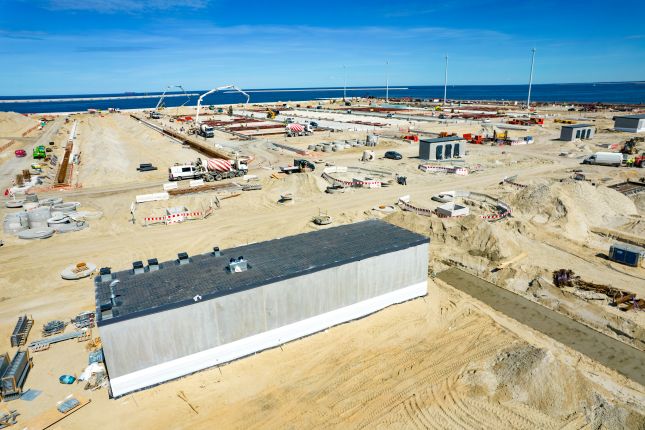As of the end of May 2024, the total advancement of construction work, with the implementation of the T3 container terminal, is already more than 55% respectively.
During the past months, work has been concentrated in the main quay and storage yards. The advancement of reinforced concrete works, both on the capping beam and on the rear crane beam , is now more than 70%, which will allow us to start the next front works - a key stage, that will soon be carried out on the mentioned elements, which is the assembly - welding and positioning of the rail for the main STS quay cranes.
Parallel to the installation of the rails, work is taking place on the quay equipment, i.e. the preparation of anchoring elements for the fender elements for ships, as well as infrastructure works between the beams, after the completion of which the final element will remain the execution of the target pavements. At the finishing stage are works on the first four container stacks, where the foundations along with the rail for the CRMG cranes have been 100% completed. The beams for the containers have been completed at 80%, and the access roads between the yards have been completed at 50%. Completion of this work is scheduled for the end of June 2024, which will allow deliveries of the first CRMG cranes one month later, followed by installation and commissioning process.
The completion of the consolidation of the reclamation area intended for the construction of the T3 terminal, completed with the creation of an artificial island, has allowed the release of the entire 36-hectare site for further construction work. Work began on erecting power substation buildings with their equipment, among other things, necessary for the power supply of the newly constructed terminal and the terminal's target equipment (cranes).
Taking advantage of favorable weather conditions and the full construction season, the Contractor is carrying out work on the remaining open fronts related to: reinforced concrete work, paving, and infrastructure such as rainwater drainage, water supply systems, electrical power and telecommunications systems. Lighting masts, more than 30 meters high, have been erected on the resulting mast foundations, which are currently the highest element visible above the platform level.


